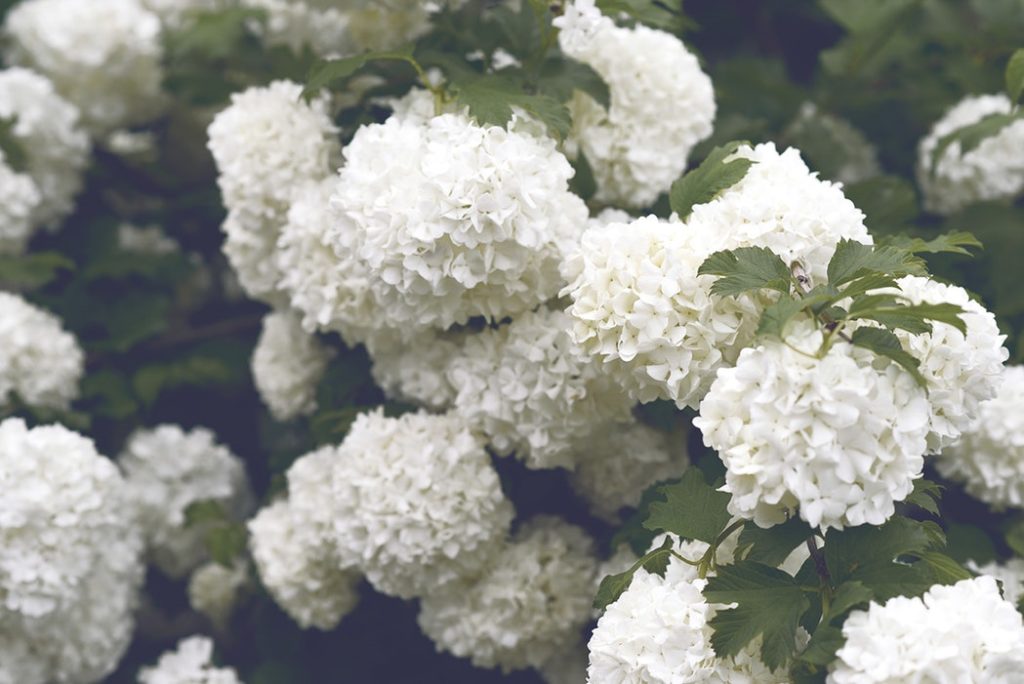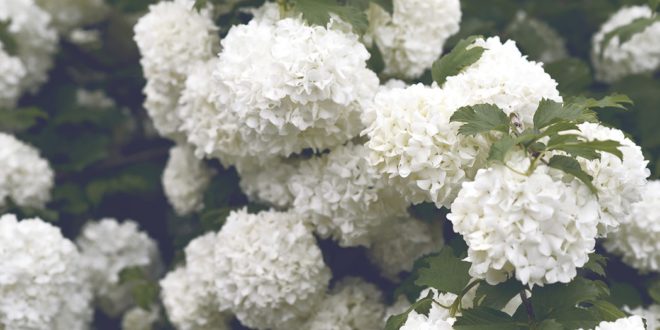Hydrangeas are one of the easiest flowering plants to grow yet few gardeners realise their full potential. Here’s how to turn hydrangeas from ho-hum to a stand-out feature in your home and garden.

White magic
White is one of the most important colours in the garden because it has the unique ability to light up otherwise shady spots. Unfortunately, few striking plants enjoy shady spots – but the white hydrangea is one of them. White hydrangeas are completely different to the blue and pink varieties which change colour in response to the acid or alkaline conditions in the soil. A white hydrangea retains its ivory glow regardless of the soil it grows in. Because its blooms are big and showy, white hydrangea are perfect for displaying en mass at weddings. Pick them early in the day, and crowd the stems into galvanised iron buckets for a casual-country or shabby-chic affect. Varieties of easy-to-grow white hydrangea include ‘Bridal Bouquet’, ‘Immaculata’ and ‘Agnes Pavelli’.
Savour the scent
Don’t be one of the many gardeners who believe hydrangeas offer no scent! PG Hydrangeas (short for Hydrangea perniculata ‘Grandiflora’) are prized for their fragrance, and as they grow in excess of 2 metres high, they carry plenty of sweet-scented blooms. The multi-stemmed shrub flowers in summer when it is covered in blousy white cone-shaped blossoms. PGs can be grown as small trees, and are a talking point when displayed as large standards.
Social climbers
Finding a climber to suit a cold climate is notoriously difficult but hardy hydrangeas offer the answer. Climbing varieties generally grow to around 1.5 metres with a vine-like habit, and sport soft, lacy blooms. They flower in late spring through into summer and are frequently scented. Like all hydrangeas, the climbing varieties enjoy partial shade but will tolerate full sun. Make the most of them by growing them up a trellis close to a window, or through an existing small tree. These climbers are low-maintenance as their aerial roots attach to most surfaces. They are an excellent plant for hiding an otherwise unattractive wall.
DIY drying
Dried hydrangeas retain their beautiful colours which makes them perfect for filling vases over the winter months. However, as anyone who has tried to dry the blooms knows, there is a right and wrong time for harvesting. To avoid the blooms wilting and the petals shrivelling, pick when the flowers are fully mature. The clue to maturity is that the bloom’s anticipated colour is uniform across the entire flower. An even more important indication of maturity lies in the tiny formations in the centre of each flower. When these little bud-like structures are tightly closed, the flower is still immature. When they are fully open, the flower is ready to be picked for drying. Harvest the blooms with secateurs, strip the leaves from the stems, tie the bunch together and hang it upside down in a cool, airy space away from direct sunlight. Hydrangeas can also be left to dry on the bushes before being picked. If adopting this method, harvest before any of the petals brown off or becomes damaged by rain.









Join the Discussion
Type out your comment here:
You must be logged in to post a comment.